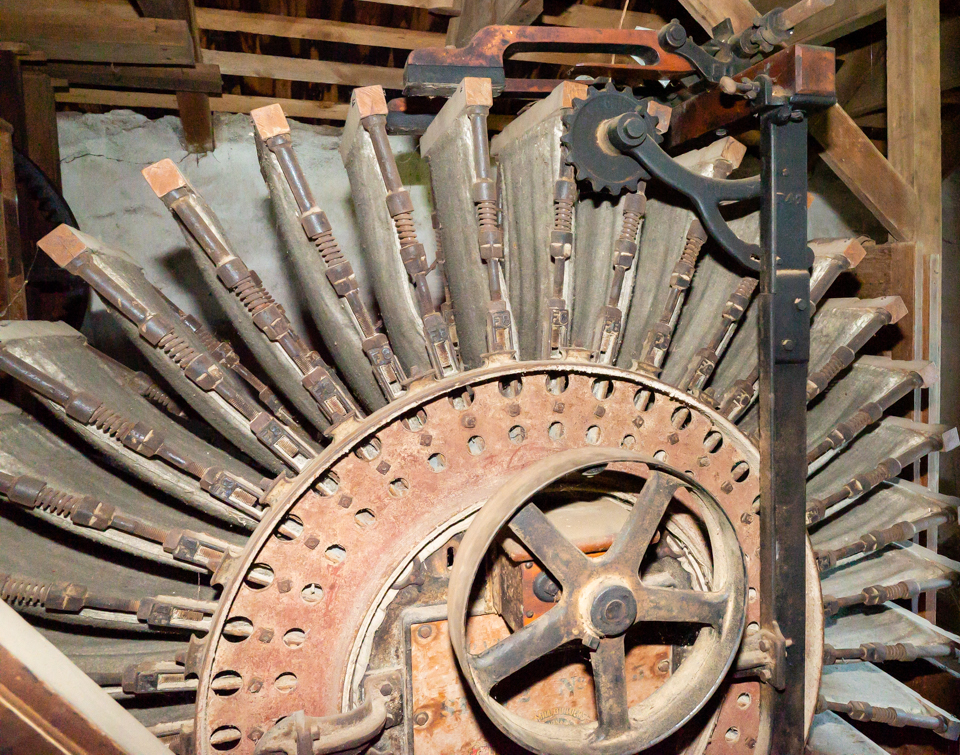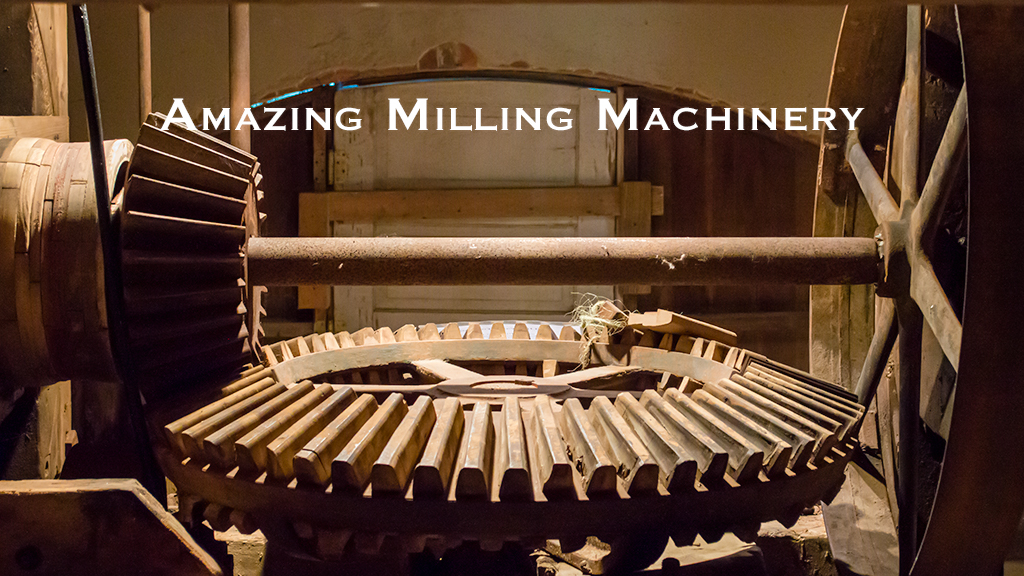Welcome to the third installment of “Amazing Milling Machinery”. In each of these articles I highlight an object that might be found in a typical 19th century, water-powered grist mill. Today’s featured gadget is a dust collector. This device collects flour dust from the air and vents it to the outside.
Grist mills were very dusty operations. Dust would be generated when the wheat is loaded into the storage bins. The flour making process was also potentially very dusty. The miller would take careful precautions throughout the process of turning wheat into flour. The flour dust would be contained from the grind stones or roller mills through the sifting and bolting process and into the final packaging as I mentioned in the previous article about the barrel loader.
Still, there would always be some dust released into the air along the way. One of the primary hazards in an antique grist mill was fire. It was a rare mill that did not suffer some fire damage during its lifetime. Often, the fire could consume and destroy the entire mill. Many mills suffered more than one fire through the years. Flour dust, under the right conditions, is more explosive than gun powder. Millers used wooden shovels when handling grain so as to avoid a spark. At a minimum, it made it difficult for mill workers to breathe if too much dust was in the air.

For this reason, every mill would have some sort of dust collection system. The one pictured here, found in the Ressler Mill at Mascot, used a series of about forty silk panels arranged around a rotating drum. The silk panels would collect dust from the air as they rotated around the drum. At the top of the device is a wooden knocker that gives each panel a whack as it reaches the top of the drum. This was designed to shake the dust from the silk into the collector channel in the center of the drum. A fan directed a flow of air through the channel and vented the dust to the outside.
Ressler’s mill no longer grinds wheat into flour, so this device does not run anymore. But you can imagine the loud racket this must have made when it operated.
